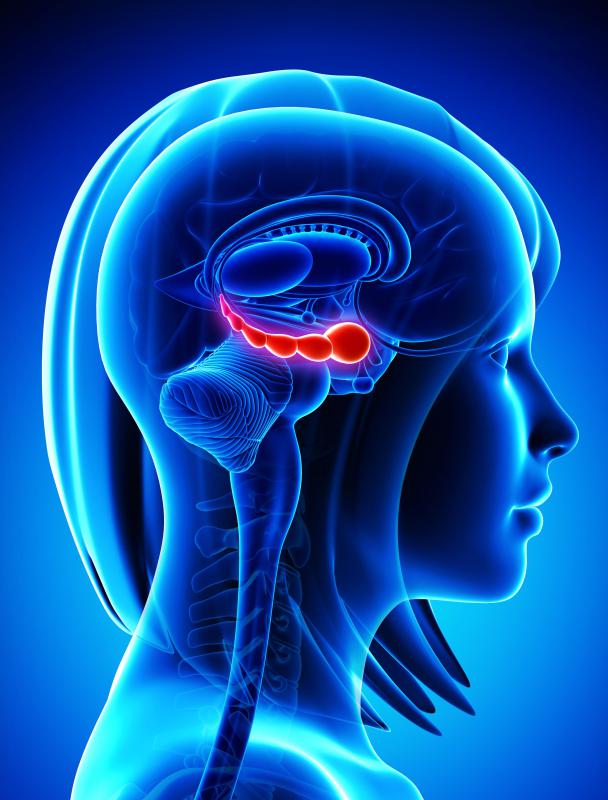At WiseGEEK, we're committed to delivering accurate, trustworthy information. Our expert-authored content is rigorously fact-checked and sourced from credible authorities. Discover how we uphold the highest standards in providing you with reliable knowledge.
What Is the Difference between the Temporal and Parietal Lobes?
The human brain is divided into different parts, with each part responsible for specific functions, and the temporal and parietal lobes are two of these sections. The parietal lobes are responsible for some sensory functions, meaning they allow a person to experience the senses of taste, touch and smell, and they also allow a person to recognize related stimuli, such as pain and pressure. The parietal lobes also allow the recognition of movement, and they help a person to orient position. The temporal lobes allow a person to process the sense of hearing, and they also allow speech and memory retrieval.
The temporal and parietal lobes are situated in the largest of the brain's sections, which is called the cerebrum. The cerebrum is also referred to as the cortex. The cerebrum has four lobes: the occipital lobe, the frontal lobe, and the temporal and parietal lobes. The temporal and parietal lobes have two sections apiece.

The parietal lobes allow a person to move voluntarily, and they facilitate the understanding of specific concepts. Problems or injuries with the parietal lobes can lead to numerous problems. Anomia, for example, is the inability to summon the name of an item, while agraphia is the inability to write an object’s name. Problems in the parietal lobes also can lead to an inability to perform math, called dyscalculia, or difficulty reading, called alexia. Parietal lobe problems also can cause an inability to tell right from left, among other spatial issues.

Injuries or problems in the temporal lobes can lead to a number of problems, including an inability to understand speech, called Wernicke’s aphasia, and an inability to recognize a face, called prosopagnosia. Short-term memory problems can also result, as well as sexual problems or aggression. Long-term memory also can be affected.
The temporal and parietal lobes, while both classified as part of the cerebrum, are located in different areas. In broad terms, the parietal lobes are situated mid-brain. Senses are processed through a part of this area, which is called the somatosensory cortex. The temporal lobes are toward the bottom of the brain. This site holds the hippocampus, which helps govern memory.

The other two parts of the cerebrum are the occipital lobe and the frontal lobe. The occipital lobe allows the brain to process visual images. The frontal lobe allows reasoning and problem solving, and it is also associated with emotions and some parts of speech.
AS FEATURED ON:
AS FEATURED ON:













Discuss this Article
Post your comments